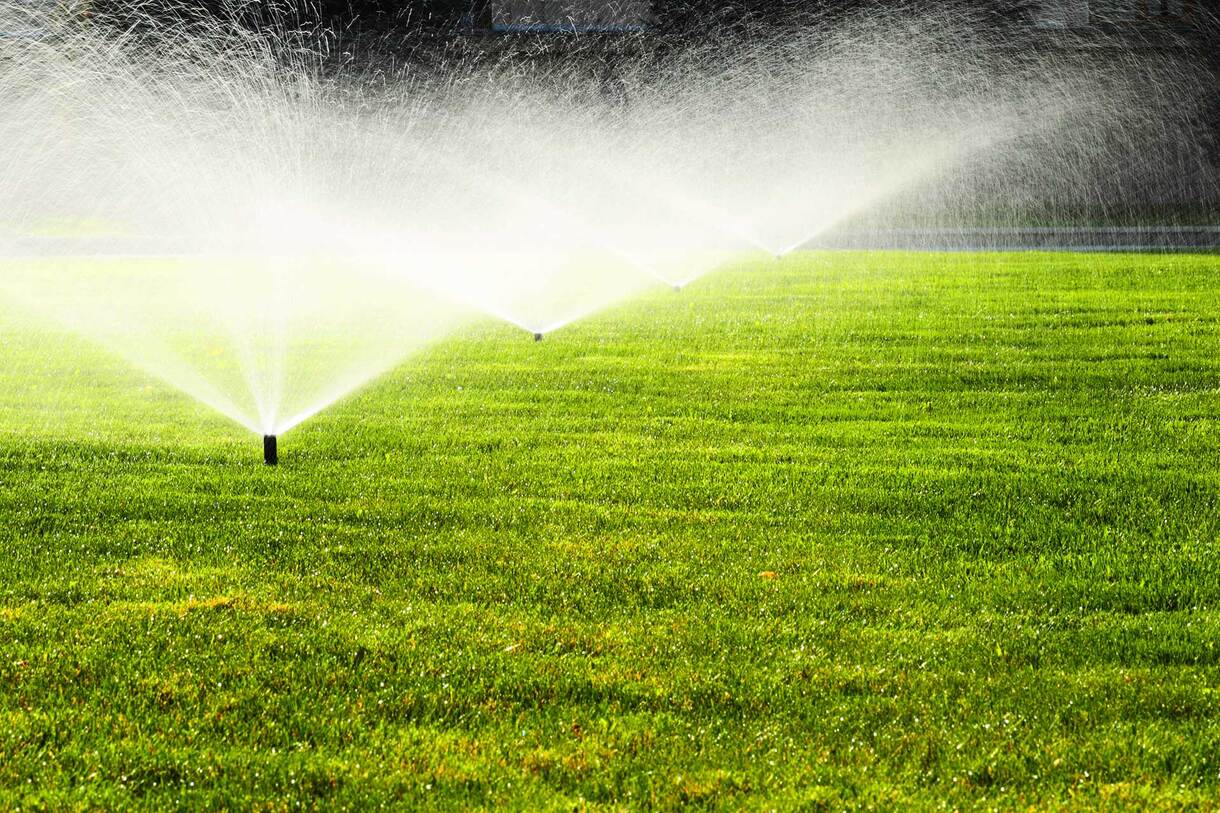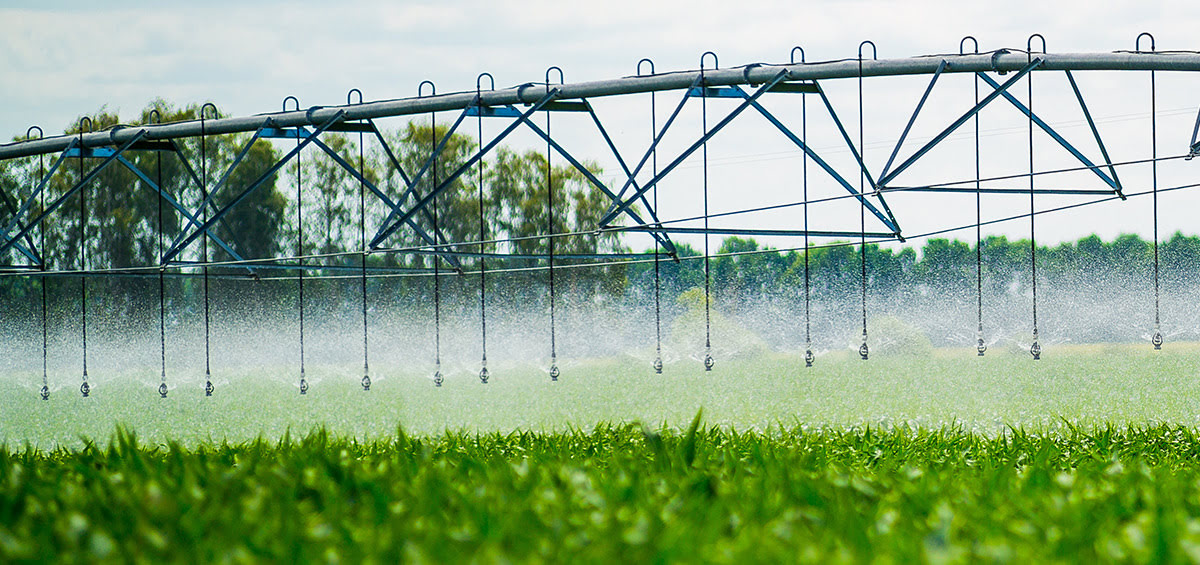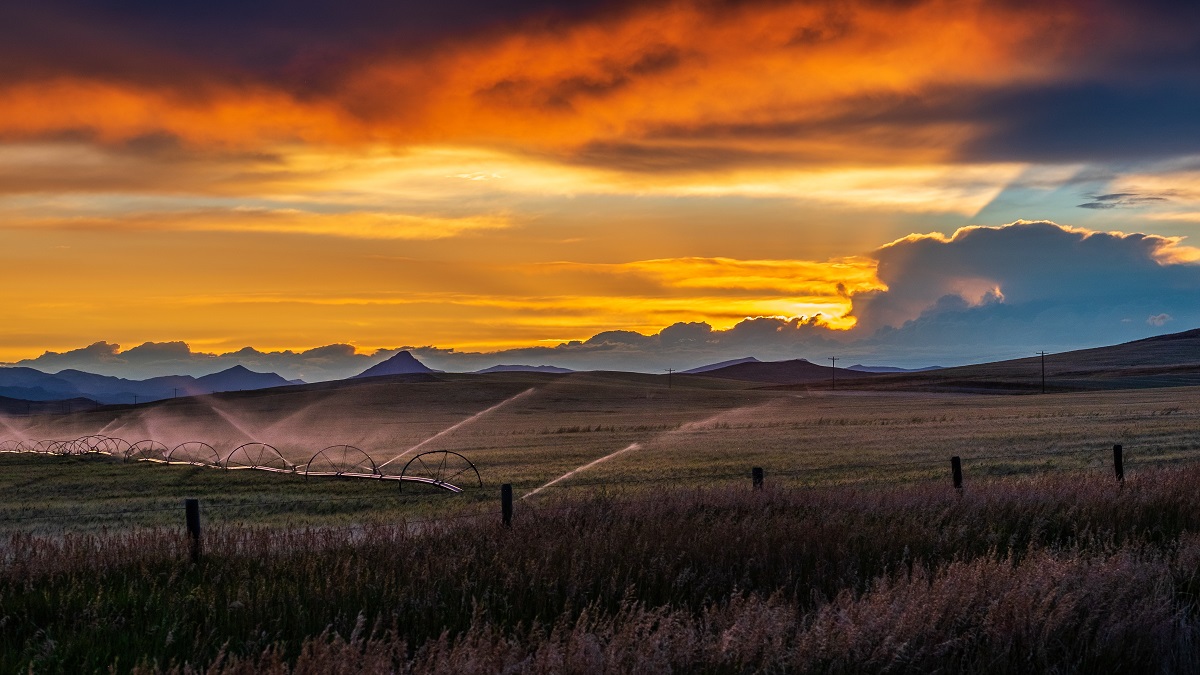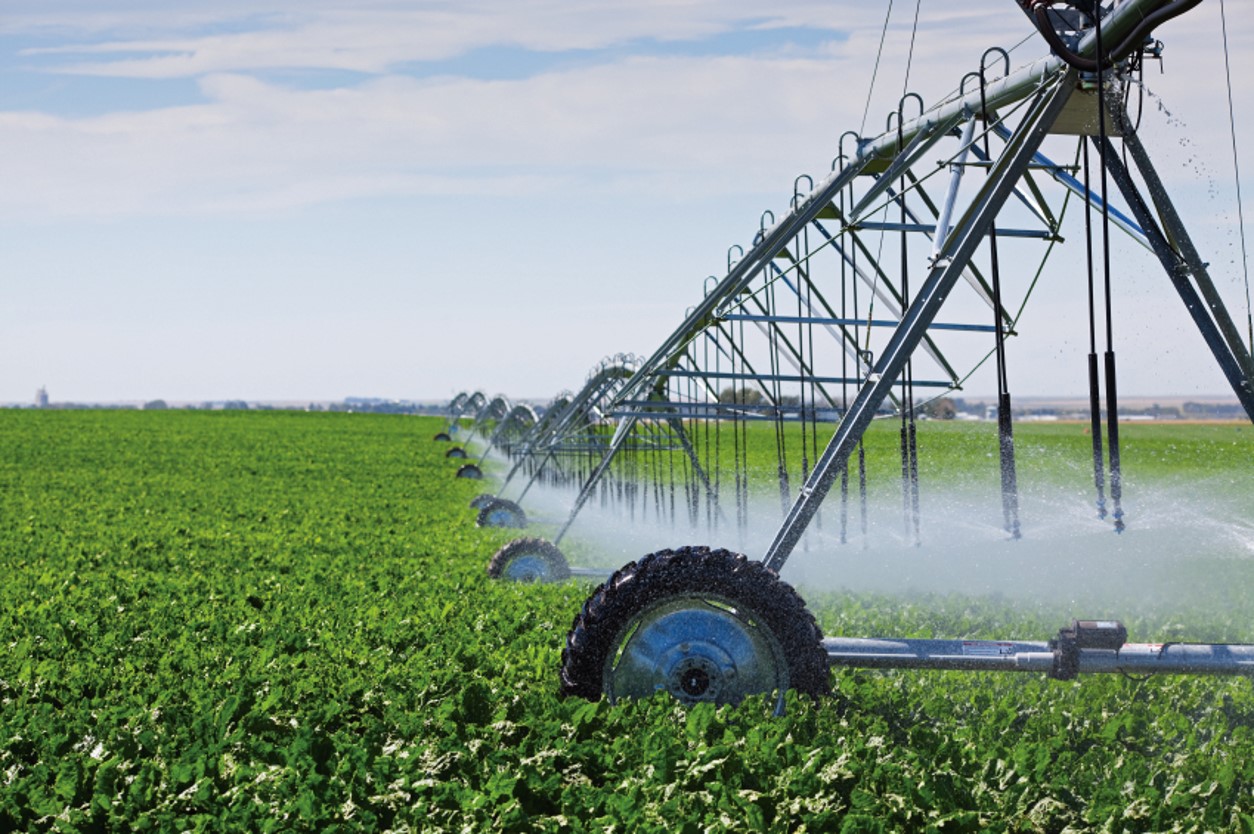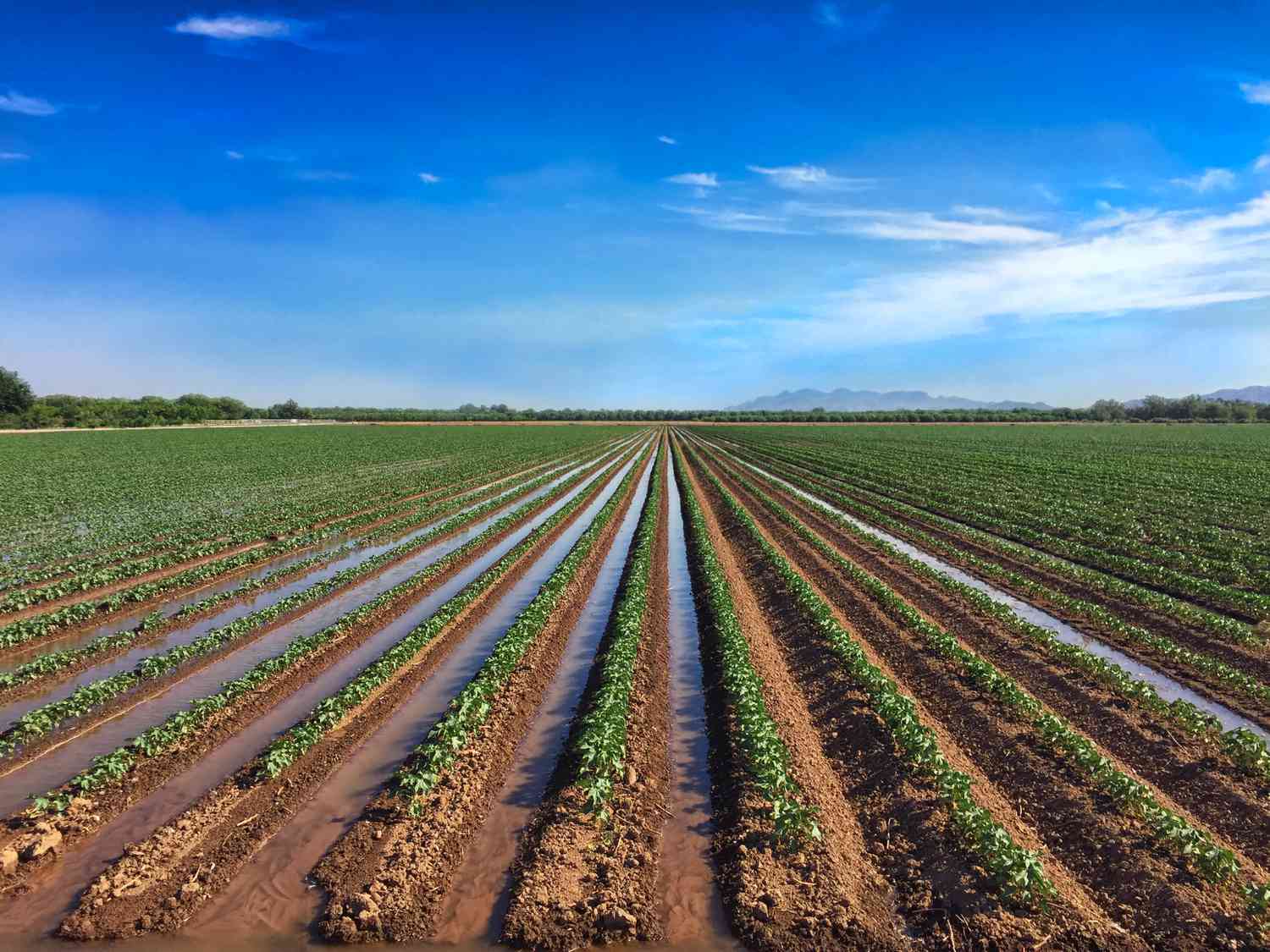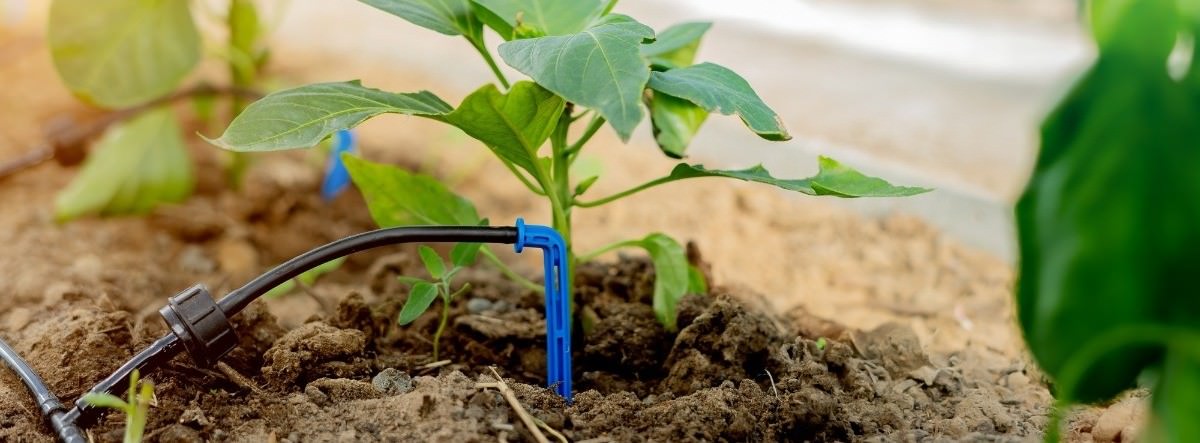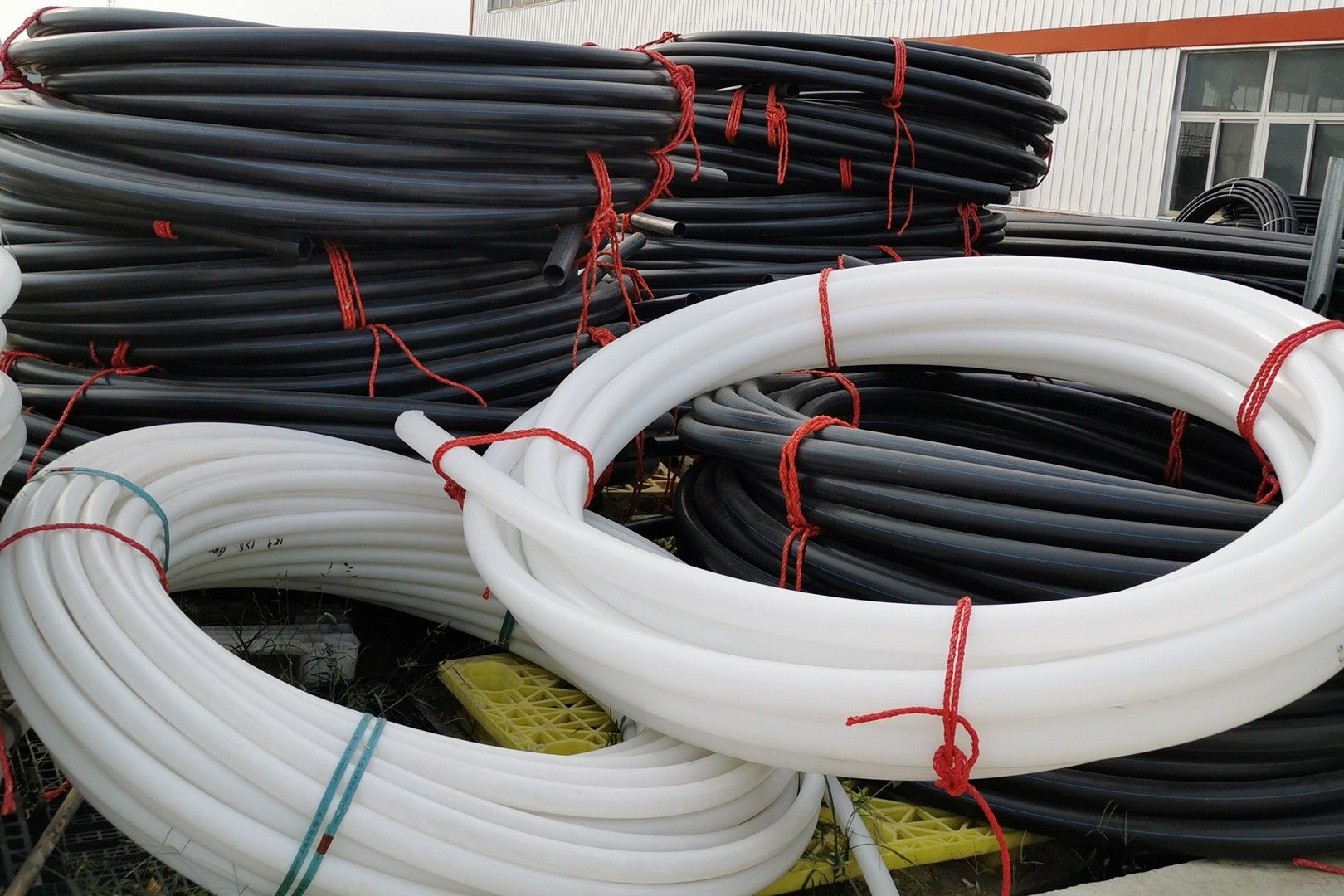Home>Gardening News and Trends>Latest News>What Is A Irrigation


Latest News
What Is A Irrigation
Modified: February 5, 2024
Get the Latest News on Irrigation
(Many of the links in this article redirect to a specific reviewed product. Your purchase of these products through affiliate links helps to generate commission for Chicagolandgardening.com, at no extra cost. Learn more)
Table of Contents
Introduction
Welcome to the world of irrigation, a fascinating and essential practice that has played a crucial role in agriculture and land management for centuries. As the demand for food production continues to rise due to population growth, the importance of efficient irrigation becomes even more evident. In this article, we will explore the concept of irrigation, its significance, and the different types of irrigation systems used today.
Irrigation refers to the process of artificially supplying water to plants or crops to ensure their proper growth and development. It involves the controlled application of water to agricultural fields, gardens, and landscapes, compensating for any deficiencies in natural rainfall. Irrigation acts as a vital tool to optimize crop productivity, improve water management, and mitigate the risk of drought-induced plant stress.
The practice of irrigation dates back to ancient civilizations, such as those in Mesopotamia, Egypt, and China, where early farmers used simple techniques like diverting water from rivers and streams to irrigate their fields. Over time, irrigation systems have evolved, incorporating advanced technologies to maximize water efficiency and reduce wastage.
Today, irrigation plays a fundamental role in modern agriculture, allowing farmers to control water distribution, provide consistent moisture to crops, and enhance soil fertility. It has become an essential tool for achieving higher crop yields, extending growing seasons, and cultivating crops in regions with limited rainfall.
By implementing irrigation, farmers can effectively manage water resources, reducing the reliance on unpredictable rainfall and improving overall agricultural productivity and food security. Moreover, irrigation techniques help in the efficient utilization of fertilizers and other agricultural inputs, reducing wastage and environmental impact.
The importance of irrigation goes beyond crop production. It is also used in landscaping, sports field maintenance, and wastewater treatment. Creating aesthetically pleasing gardens, ensuring green spaces in urban areas, and maintaining sports fields and golf courses are all made possible through the strategic application of irrigation.
In the following sections, we will delve deeper into the various types of irrigation systems, their advantages and disadvantages, and the factors to consider in irrigation planning. So, let’s explore the world of irrigation and discover how this essential practice sustains our agricultural and natural landscapes.
Definition of Irrigation
Irrigation is a process that involves the controlled application of water to plants or crops to supplement natural rainfall and ensure their optimal growth and development. It involves the artificial provision of water to agricultural fields, gardens, and landscapes to compensate for insufficient or irregular precipitation patterns.
Irrigation serves as a means of providing crops with the necessary moisture levels required for healthy growth, especially in areas where rainfall is inconsistent or insufficient. It involves the deliberate distribution of water to meet the specific needs of each plant, optimizing their growth conditions and maximizing crop productivity.
There are various methods employed in irrigation, ranging from simple techniques to complex systems that utilize advanced technologies. These methods are designed to deliver water efficiently and effectively to the root zone of plants or crops, where it is absorbed and utilized for photosynthesis, nutrient uptake, and overall physiological functions.
One of the primary objectives of irrigation is to maintain the soil moisture at an optimal level for plant growth. Different crops have varying water requirements, and proper irrigation planning ensures that the water is delivered in the right amount and at the right time, ensuring healthy development and minimizing water wastage.
Irrigation plays a crucial role in regions where natural rainfall is insufficient to support crop production. By providing a reliable water supply, it enables farmers to grow crops in areas with arid or semi-arid climates, transforming unproductive land into fertile agricultural zones.
Moreover, irrigation allows farmers to cultivate crops throughout the year, regardless of the season or weather conditions. This results in increased agricultural productivity, as multiple harvests can be achieved in a single year. Additionally, it provides stability in food production, reducing the vulnerability to droughts and ensuring a steady supply of food.
It is important to note that irrigation is not only limited to conventional farming practices. It is also used in horticulture, landscaping, and even hydroponics, where plants are grown in a soilless medium. In these applications, irrigation methods are tailored to meet the specific water requirements of each plant and optimize their growth conditions.
In the next sections, we will explore the different types of irrigation systems used today, highlighting their unique features, advantages, and disadvantages. Understanding these systems will provide a deeper insight into the various methods used to ensure efficient water distribution and maximize crop yield.
Importance of Irrigation
Irrigation plays a vital role in agriculture and land management, providing numerous benefits that contribute to sustainable food production, environmental conservation, and socio-economic development. Let’s explore the importance of irrigation in more detail:
1. Increased Crop Yields: One of the primary benefits of irrigation is improved crop productivity. By supplying water directly to the root zone of plants, irrigation ensures that crops receive adequate moisture for growth and development, especially during dry spells or periods of minimal rainfall. This allows farmers to achieve higher yields, increase food production, and meet the ever-growing demands of a growing global population.
2. Water Management: Irrigation offers a proactive approach to water management. Rather than relying solely on natural rainfall, which can be unpredictable and insufficient, irrigation allows for controlled water distribution. By optimizing water usage, irrigation helps mitigate the risk of water scarcity, reduces dependence on limited water sources, and promotes efficient water allocation.
3. Crop Diversification: Irrigation opens up opportunities for crop diversification in regions with limited rainfall. With proper irrigation systems in place, farmers can cultivate a wider range of crops that may not be viable under rain-fed conditions. This enhances agricultural resilience, reduces reliance on a single crop, and promotes economic development through the production of high-value crops.
4. Extend Growing Seasons: In areas with distinct wet and dry seasons, irrigation allows for the extension of the growing season. By providing a consistent water supply, farmers can continue cultivating crops beyond the limitations imposed by seasonal rains. This not only increases agricultural output but also offers flexibility in planning and crop rotation strategies.
5. Soil Fertility and Nutrient Management: Irrigation systems facilitate the efficient application of fertilizers and other soil amendments. By incorporating nutrients through irrigation water, farmers can optimize nutrient uptake by plants, ensuring better growth and productivity. Moreover, irrigation aids in soil moisture management, preventing excessive drying or waterlogging, and maintaining optimal soil conditions for plant growth.
6. Environmental Conservation: Well-designed irrigation systems promote efficient water usage and minimize water wastage. This reduces the strain on natural water sources and mitigates the environmental impacts of excessive water extraction. Additionally, irrigation allows for the reclamation of arid and degraded lands, promoting sustainable land use practices and combating desertification.
7. Economic Stability: Irrigation contributes to economic stability in agricultural communities. By ensuring reliable crop production and reducing the vulnerability to climatic uncertainties, irrigation provides a consistent source of income for farmers. It also stimulates secondary economic sectors, such as food processing and agribusiness, boosting employment opportunities and overall rural development.
Considering the significant role irrigation plays in modern agriculture, its efficient and sustainable implementation is of utmost importance. In the following sections, we will explore different types of irrigation systems and their unique characteristics to better understand how they contribute to the overall success and sustainability of irrigation practices.
Types of Irrigation Systems
Irrigation systems can be categorized into several types, each designed to suit different agricultural, horticultural, and landscaping needs. These systems vary in terms of water delivery methods, efficiency, and suitability for different soil types. Let’s explore the most common types of irrigation systems:
1. Surface Irrigation: Surface irrigation is one of the oldest and widely used irrigation methods. It involves flooding or furrowing the field with water, allowing it to flow and infiltrate the soil. This method is suitable for level or gently sloping land and is often used for row crops, meadows, and flat gardens. Surface irrigation is relatively simple, cost-effective, and does not require complex equipment. However, it can be less efficient due to the potential for water loss through evaporation, runoff, and uneven distribution.
2. Sprinkler Irrigation: Sprinkler irrigation involves the use of overhead sprinklers or sprayers that distribute water in a uniform pattern across the field. The water is delivered in the form of droplets, simulating rainfall. Sprinkler irrigation is versatile and can be used on various terrains. It is suitable for most crop types and provides precise water application with minimal water loss due to evaporation. However, it may require higher initial investment costs for equipment and energy to operate the system.
3. Drip Irrigation: Drip irrigation, also known as micro-irrigation, is a highly efficient method that delivers water directly to the root zone of plants through a network of tubes or emitters. The water is released slowly and in controlled amounts, minimizing evaporation and ensuring efficient water usage. Drip irrigation is ideal for row crops, orchards, vineyards, and gardens. It promotes water conservation, nutrient uptake, and targeted irrigation, resulting in higher water and fertilizer efficiency. Although the initial installation costs can be higher, drip irrigation offers long-term savings in water and labor.
4. Subsurface Irrigation: Subsurface irrigation involves the application of water below the soil surface, directly into the root zone of plants. This method utilizes buried pipes or tubes with small openings or porous materials that slowly release water into the soil. Subsurface irrigation minimizes water loss through evaporation and minimizes contact with foliage, reducing the risk of diseases. It is commonly used in tree plantations, orchards, and greenhouses. While it requires careful monitoring to avoid soil saturation, subsurface irrigation enhances water efficiency and provides a uniform water supply to the plants.
These are the primary types of irrigation systems used in farming and other applications. Each system offers unique advantages and considerations that should be evaluated based on the specific requirements of the crop, soil conditions, terrain, and water availability. By selecting the most appropriate irrigation system, farmers and land managers can optimize water usage, ensure healthy plant growth, and contribute to sustainable land and water management.
Surface Irrigation
Surface irrigation is one of the oldest and most widely used methods of irrigation. It involves the application of water to the surface of the field, allowing it to flow and infiltrate the soil. This method is suitable for level or gently sloping land and is commonly used for row crops, meadows, and flat gardens.
In surface irrigation, water is introduced to the field through channels or ditches. Once the water reaches the field, it spreads across the surface, following the slope of the land. The water infiltrates the soil, providing moisture to the plants’ root zones.
Surface irrigation systems can be further classified into different subtypes based on the method used to distribute water. These include:
- Flooding: Flooding is the simplest form of surface irrigation. Water is released from a channel or ditch and allowed to cover the entire field uniformly. The water spreads over the surface, infiltrates the soil, and reaches the plant roots. Flooding is commonly used for rice fields and large-scale agricultural operations. However, it can result in higher water losses due to evaporation and runoff.
- Furrow Irrigation: Furrow irrigation involves the creation of small channels or furrows in the field. Water is released into these furrows, allowing it to flow along the field, wetting the soil and reaching the plant roots. Furrow irrigation is suitable for row crops such as corn, potatoes, and vegetables. It allows for more efficient delivery of water compared to flooding since it targets water directly to the root zone. However, furrow irrigation can have uneven water distribution and nutrient leaching in the furrows.
- Basin Irrigation: Basin irrigation involves dividing the field into small basins or compartments. Water is released into each basin, allowing it to accumulate and infiltrate the soil. Basin irrigation is commonly used for orchards, vineyards, and gardens. It provides more control over water application and reduces water loss compared to flooding. However, it requires level land and can pose challenges in areas with heavy soils or poor drainage.
Surface irrigation is a cost-effective method that doesn’t require sophisticated equipment. It relies heavily on gravity to distribute water across the field. However, it does have some limitations. Since surface irrigation involves the application of water over the entire field surface, it can result in significant water loss through evaporation and runoff. Therefore, careful monitoring of the water application rate and proper land preparation are essential to minimize these losses.
Despite its limitations, surface irrigation offers several advantages. It is suitable for a wide range of crops and can be easily adapted to different field sizes and shapes. It is also more forgiving in terms of clogging issues and can handle water with higher sediment loads.
Overall, surface irrigation plays an important role in providing water to crops in many agricultural settings. While it may not be as water-efficient as other irrigation methods, proper design, management, and maintenance can help farmers maximize its effectiveness and minimize water losses.
Sprinkler Irrigation
Sprinkler irrigation is a popular method of applying water to crops, gardens, and landscapes. It involves the use of overhead sprinklers or sprayers to distribute water in a uniform pattern across the field. This method simulates rainfall, delivering water in the form of droplets to the plants. Sprinkler irrigation is versatile and can be used on various terrains, making it suitable for a wide range of crops.
The sprinkler system consists of a network of pipes or tubes with sprinkler heads strategically placed throughout the field. When the system is activated, the sprinkler heads rotate or emit water, covering a specific area with a predetermined radius. This allows for even distribution of water across the field, ensuring that each plant receives an adequate amount.
There are different types of sprinkler irrigation systems, including center pivot, lateral move, and solid set systems. Each system varies in terms of design, coverage area, and water application efficiency. The choice of system depends on various factors, such as field size, crop type, and terrain.
Sprinkler irrigation offers several advantages. Firstly, it provides precise water application, which helps minimize water wastage and ensures efficient water usage. Because the water is sprayed over the crop area, there is reduced evaporation compared to other methods like flooding or surface irrigation.
Furthermore, sprinkler irrigation allows for flexibility in terms of water application timing and location. Farmers can schedule irrigation based on specific crop requirements, weather patterns, and water availability. This flexibility enables them to optimize water usage and adapt to changing environmental conditions.
Sprinkler irrigation systems are also beneficial in frost protection and cooling applications. By spraying water during frost-prone periods or hot summer days, the evaporative cooling effect helps to maintain suitable temperatures for crop growth and prevents damage from extreme weather conditions.
Despite its advantages, there are also some considerations when using sprinkler irrigation. The initial installation cost and energy requirements for operating the system can be higher compared to other methods. Maintenance and occasional repairs may also be needed to ensure the efficient functioning of the sprinkler heads and the overall system.
Overall, sprinkler irrigation is a widely used and flexible method for providing water to crops and landscapes. Its ability to deliver water efficiently and evenly makes it an effective means of irrigation, contributing to improved crop productivity and water management.
Drip Irrigation
Drip irrigation, also known as micro-irrigation, is a highly efficient method of delivering water directly to the root zone of plants. It involves the use of a network of tubes, pipes, or emitters to deliver water slowly and in controlled amounts to individual plants or specific areas. Drip irrigation is widely used in agriculture, horticulture, and landscaping settings due to its precision and water-saving capabilities.
In a drip irrigation system, water is released from small openings or emitters directly onto the soil surface or into the root zone. The water is then absorbed by the soil, providing moisture to the plants’ roots where it is most needed for growth and development.
One of the key advantages of drip irrigation is its exceptional water efficiency. Unlike other methods, drip irrigation reduces water loss through evaporation and runoff since water is delivered directly to the root zone where it can be easily absorbed by the plants. This targeted water application reduces water wastage and makes the most efficient use of the available water resources.
Drip irrigation offers several benefits to both farmers and gardeners. Firstly, it promotes better plant health and growth by maintaining a consistent soil moisture level. This reduces the chances of overwatering or underwatering, which can lead to stress, diseases, and reduced crop yield. Additionally, drip irrigation avoids wetting the foliage, minimizing the risk of leaf diseases and fungal infections.
Furthermore, drip irrigation allows for precise control over water and nutrient delivery. The flow rate of the emitters can be adjusted to match the specific water requirements of different crops, enabling farmers to optimize irrigation management based on plant needs. Moreover, drip systems can be easily integrated with fertigation, a process where fertilizers are dissolved in the irrigation water and delivered directly to the roots, improving nutrient efficiency.
Other advantages of drip irrigation include reduced weed growth, as water is only provided to the planted areas, minimizing water availability for weed germination. The localized application of water also helps in conserving energy and reducing labor costs, as it requires less water pumping and less time spent on irrigation activities.
While drip irrigation offers numerous benefits, its successful implementation requires careful planning and design. Factors such as soil type, crop requirements, emitter spacing, and water quality need to be considered to ensure optimal system performance. Additionally, regular maintenance is necessary to prevent emitter clogging and ensure the efficient operation of the system.
In summary, drip irrigation is a highly efficient and water-conserving method that provides precise water and nutrient delivery to plants. Its ability to reduce water wastage, promote healthy plant growth, and maximize water use efficiency makes it an increasingly popular choice for sustainable agriculture, horticulture, and landscaping practices.
Subsurface Irrigation
Subsurface irrigation, also known as subsurface drip irrigation or buried drip irrigation, is a method that involves the application of water directly below the soil surface, in close proximity to the root zone of plants. It is an efficient and precise irrigation technique widely used in agriculture, landscaping, and horticulture.
In subsurface irrigation, water is distributed through buried pipes or tubes that have small openings or are made of porous materials. These pipes are placed below the soil surface, allowing water to be released slowly and evenly into the surrounding soil. The water then moves through capillary action, ensuring a consistent supply to the plant roots.
Subsurface irrigation offers several benefits compared to other irrigation methods. Firstly, it minimizes water losses due to evaporation and runoff since the water is applied directly to the root zone where it is needed. This provides higher water use efficiency and minimizes water wastage, making it an environmentally-friendly irrigation option.
Furthermore, subsurface irrigation reduces weed growth since the water is targeted to the plant roots and not to the soil surface. By depriving weeds of water, subsurface irrigation helps in weed management and reduces the need for herbicides.
Another advantage of subsurface irrigation is its ability to minimize foliar diseases. By avoiding water contact with the foliage, the risk of fungal infections and leaf diseases is significantly reduced.
Subsurface irrigation also allows for flexible irrigation scheduling. It can be designed to operate on a time-based schedule or through soil moisture sensors, ensuring optimal water supply based on the specific needs of the plants. This adaptability helps in conserving water and reducing energy consumption.
However, there are some considerations when implementing subsurface irrigation. Proper installation and maintenance are essential to prevent clogging of the emitters or pipes from soil particles or root intrusion. Regular monitoring of the system is necessary to ensure uniform water distribution and prevent any issues that may affect the performance of the irrigation system.
Subsurface irrigation is particularly beneficial in water-scarce areas or regions with water quality issues. The controlled release of water underground helps minimize water evaporation and reduces the risk of soil salinization.
Overall, subsurface irrigation is an efficient and environmentally-friendly method of irrigation. Its ability to deliver water directly to the root zone, reduce water wastage, and enhance crop health and productivity makes it a valuable tool in sustainable agricultural practices.
Advantages of Irrigation
Irrigation, whether through surface, sprinkler, drip, or subsurface systems, offers numerous advantages that contribute to improved agricultural practices and sustainable land management. Let’s explore some of the key advantages of irrigation:
1. Increased Crop Yield: One of the primary benefits of irrigation is the ability to provide an adequate water supply to crops, ensuring optimal growth and higher yields. By supplementing natural rainfall, irrigation helps to mitigate the effects of drought and water scarcity, allowing farmers to cultivate crops even in regions with limited rainfall. This leads to increased food production, enhanced livelihoods for farmers, and improved food security.
2. Water Management: Irrigation systems provide a means of effectively managing water resources. By controlling the timing and amount of water applied, farmers can optimize water usage and ensure that it is used efficiently. This is especially crucial in areas where water scarcity is a concern. Through proper planning and utilization of irrigation systems, water can be directed to the areas that require it the most, resulting in reduced waste and improved water management practices.
3. Enhanced Nutrient Delivery: Irrigation systems allow for the efficient application of fertilizers and other nutrients directly to the root zone of plants, promoting their uptake and utilization. This targeted delivery of nutrients ensures that crops receive the essential elements needed for healthy growth and optimal productivity. By combining irrigation with fertilization, farmers can improve nutrient efficiency and reduce the risk of nutrient leaching into the environment.
4. Extended Growing Seasons: With irrigation, farmers have the ability to extend the growing season and cultivate crops throughout the year, regardless of the natural rainfall patterns. This is particularly important in areas with distinct wet and dry seasons or in regions with cold winters. By providing a consistent water supply, irrigation allows for multiple growing cycles, leading to increased crop diversity and higher overall agricultural productivity.
5. Land Transformation and Rehabilitation: Irrigation can transform unproductive or degraded land into fertile agricultural zones. By properly managing water resources and implementing irrigation systems, previously barren or arid land can be cultivated, contributing to land rehabilitation and reclamation efforts. This not only increases agricultural output but also helps to combat desertification and soil erosion.
6. Precise Water Application: Different crops have varying water requirements at different growth stages. Irrigation systems provide the ability to deliver the right amount of water at the right time and to the specific areas where it is needed the most. This precision in water application optimizes crop development, reduces water stress, and minimizes the risk of overwatering or underwatering, ensuring the overall health and vigor of the plants.
7. Economic Stability: Irrigation contributes to economic stability by providing a consistent source of income for farmers. With reliable water supply, farmers can plan cultivation activities and predict crop yields more accurately. This stability not only supports the livelihoods of farmers but also stimulates economic growth in rural communities through additional employment opportunities and agricultural-based industries.
These are just a few of the many advantages that irrigation offers. The proper implementation and management of irrigation systems can greatly improve agricultural practices, increase the sustainability of land and water resources, and contribute to food security and economic development.
Disadvantages of Irrigation
While irrigation provides numerous benefits, it is important to also consider its potential disadvantages and challenges. Here are some of the key disadvantages associated with irrigation:
1. High Initial Costs: Implementing an irrigation system often requires substantial investment in infrastructure, including pumps, pipes, sprinklers, or drip lines. The initial costs can be a barrier for small-scale farmers or those with limited financial resources. Additionally, ongoing maintenance and repairs may add to the overall expenses.
2. Energy Consumption: Most irrigation methods require energy for pumping water, especially in cases where water needs to be lifted from a water source or transported over long distances. The energy consumption associated with irrigation can contribute to greenhouse gas emissions and increase operating costs for farmers, especially in areas with limited access to affordable energy sources.
3. Water Contamination: Improperly designed or managed irrigation systems can potentially lead to water contamination. Runoff from fields with excess fertilizer or pesticide application can carry these substances into nearby water bodies, causing pollution and harming aquatic ecosystems. Careful management and adherence to proper agricultural practices can mitigate this risk.
4. Soil Degradation: Over time, improper irrigation practices, such as excessive watering or inadequate drainage, can lead to soil degradation. Waterlogging, where the soil remains excessively saturated for extended periods, can lead to reduced soil fertility, reduced oxygen availability to plant roots, and increased salinity. It is important to properly assess soil conditions and implement irrigation techniques that prevent soil degradation and promote long-term soil health.
5. Water Shortages: While irrigation can help mitigate the effects of water scarcity, it can also contribute to it if water resources are not managed properly. Overuse or mismanagement of water for irrigation purposes can deplete water sources, leading to water shortages for other uses such as drinking water, industrial processes, and natural ecosystems. Proper water resource management and allocation are essential to avoid exacerbating water scarcity issues.
6. Environmental Impact: Certain irrigation practices may have negative impacts on the environment. For example, excessive water extraction from rivers or aquifers can lead to lowered water tables, causing habitat loss or drying up of wetlands. In some cases, irrigation projects can disrupt natural river flow patterns, affecting downstream ecosystems and wildlife. Environmental assessments and sustainable management practices should be adopted to mitigate these impacts.
7. Disease and Pest Spread: Irrigation can create favorable conditions for the spread of certain plant diseases and pests, especially when moisture levels are constantly maintained. Proper crop rotation, pest management practices, and irrigation scheduling can help minimize the risk of disease and pest outbreaks.
It is important to note that while irrigation has its disadvantages, many challenges can be addressed through proper planning, management, and technological advancements. By implementing efficient irrigation practices, considering environmental factors, and adopting sustainable approaches, the negative impacts of irrigation can be minimized, allowing for the sustainable and responsible use of water resources in agriculture and land management.
Factors to Consider in Irrigation Planning
Effective irrigation planning is crucial for maximizing water efficiency, ensuring crop health, and sustaining the long-term productivity of agricultural systems. Here are key factors to consider when developing an irrigation plan:
1. Water Availability: Assessing the availability and reliability of water sources is essential in irrigation planning. Evaluate the quantity and quality of the water supply to determine its suitability for irrigation. Additionally, consider any legal restrictions or permits required for water usage, such as water rights or allocation limits.
2. Local Climate: Understanding the local climate is vital as it determines the water requirements of crops and the timing of irrigation. Assess average rainfall patterns, evapotranspiration rates, and climate projections to determine appropriate irrigation schedules and methods for different crops and growing seasons.
3. Crop Water Requirements: Each crop has specific water requirements at different growth stages. Consider the crop’s evapotranspiration rates, root depth, and sensitivity to water stress. Understanding these factors helps in determining the timing, frequency, and duration of irrigation events.
4. Soil Type and Drainage: Soil properties, such as texture, structure, and infiltration rate, influence irrigation management decisions. Assess soil moisture-holding capacity, drainage characteristics, and soil compaction issues to optimize irrigation scheduling and prevent waterlogging or runoff.
5. Topography and Field Layout: The topography and field layout affect the selection and design of irrigation systems. Consider the slope, contours, and field shape to avoid water pooling or uneven water distribution. Optimize land leveling and implement measures to minimize soil erosion and runoff.
6. Irrigation System Selection: Determine the most suitable irrigation system based on crop water requirements, field size, topography, and available resources. Evaluate the advantages, limitations, energy requirements, and costs associated with different irrigation methods (e.g., surface, sprinkler, drip, subsurface).
7. Irrigation Efficiency Measures: Consider measures to improve water efficiency, such as proper system design, regular maintenance, and the use of technologies like moisture sensors or automated irrigation controllers. Implement practices to minimize water loss, such as mulching, irrigation scheduling based on soil moisture, and irrigation system audits.
8. Water Quality Management: Evaluate the quality of the water source to identify potential challenges, such as high salinity, alkalinity, or presence of contaminants. Install filtration systems or implement water treatment methods, if necessary, to avoid soil salinization and crop damage.
9. Environmental Considerations: Assess the environmental impacts of irrigation, including water resource availability for other uses, potential habitat loss, and effects on downstream ecosystems. Incorporate sustainable practices, such as incorporating buffer zones or adopting precision irrigation techniques, to minimize environmental impacts.
10. Economic Viability: Consider the economic feasibility and affordability of irrigation systems, taking into account factors such as initial investment costs, operational expenses, expected crop yields, and market prices. Conduct a cost-benefit analysis to evaluate the economic viability of different irrigation options.
By considering these factors in irrigation planning, farmers and land managers can develop effective and sustainable irrigation strategies that optimize water use, enhance crop productivity, and support long-term agricultural viability.
Conclusion
Irrigation is a critical practice that has revolutionized agriculture, enabling farmers to overcome the challenges posed by unpredictable rainfall patterns and water scarcity. By providing crops with a controlled and reliable water supply, irrigation plays a significant role in maximizing agricultural productivity, promoting food security, and supporting sustainable land management.
Throughout this article, we have explored the various types of irrigation systems, including surface irrigation, sprinkler irrigation, drip irrigation, and subsurface irrigation. Each system has its unique advantages and considerations, offering farmers different options to optimize water distribution and meet the specific needs of their crops.
Advantages of irrigation include increased crop yields, improved water management, enhanced nutrient delivery, extended growing seasons, land transformation and reclamation, precise water application, and economic stability. These benefits contribute to stable food production, water efficiency, environmental conservation, and economic development in agricultural communities.
However, it is crucial to consider the potential challenges and disadvantages associated with irrigation. Factors such as high initial costs, energy consumption, water contamination risks, soil degradation, water shortages, potential environmental impacts, and disease spread should be carefully managed and mitigated to ensure the sustainable and responsible use of water resources.
Effective irrigation planning plays a crucial role in optimizing water use, promoting crop health, and ensuring long-term agricultural productivity. Factors to consider in irrigation planning include water availability, local climate, crop water requirements, soil type and drainage, topography and field layout, irrigation system selection, efficiency measures, water quality management, environmental considerations, and economic viability.
By analyzing these factors and implementing appropriate irrigation practices, farmers can make informed decisions to maximize water efficiency, enhance crop productivity, and minimize the environmental impact of irrigation practices.
In conclusion, irrigation is an essential tool in modern agriculture that provides the means to overcome water limitations, increase crop yields, and sustainably manage land resources. By understanding the different types of irrigation systems, considering the advantages and disadvantages, and implementing effective irrigation planning strategies, farmers can optimize water usage, enhance agricultural productivity, and contribute to a more sustainable and resilient food system.

